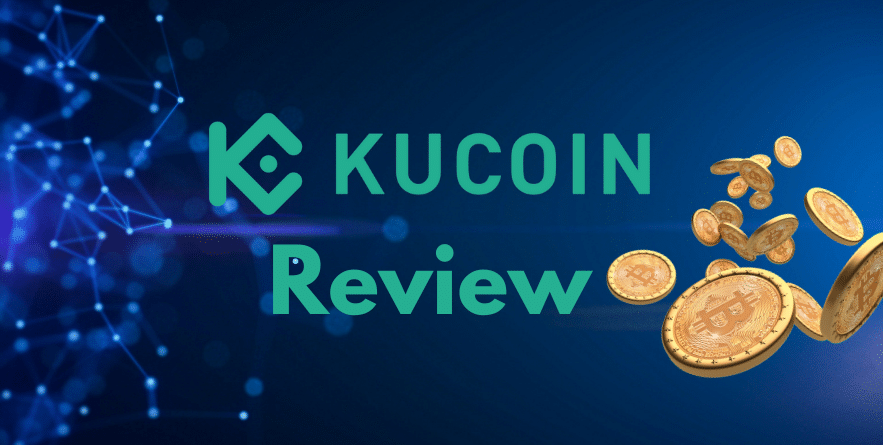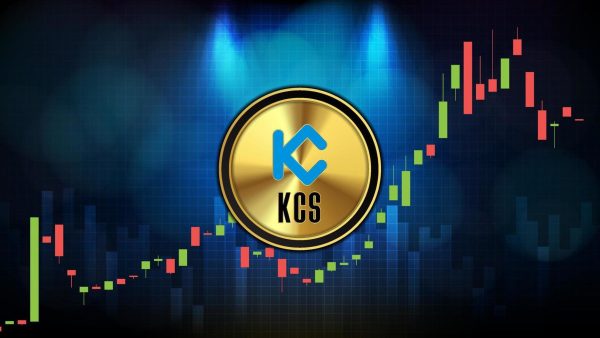Never before has it been simpler to convert Xlm to USDT on KuCoin. This article will explain a lot, so if you’re interested in learning how XLM is converted to USDT, how to use XLM, or other topics, like whether XLM is mined or staked, you should read and share this article!
To guarantee the security of user assets and accounts, KuCoin has some of the most advanced security technology and a maintenance team in the world.
Through its P2P market and credit/debit card channel, it supports over 50 fiat currencies and has no restrictions on the exchange of fiat and cryptocurrencies.
Users of KuCoin can also enhance their real-world experience by purchasing a variety of trading and financial products for as little as $1.
In the initial token sale of its native token, XLM, Stellar raised $35 million in 2014. The non-profit Stellar Development Foundation (SDF), which directs protocol development, is in charge of managing Stellar’s supply.
With an inflation rate of 1% per year when Stellar first launched, 100 billion XLMs were produced. The inflation rate has since been removed.
Stellar reduced its total supply cap to 50 billion in 2019 by burning or removing, more than half of its supply. Within an hour of the announcement, prices increased by more than 14% as the remaining tokens in circulation became more difficult to come by.
During the 2017 cryptocurrency bull run, the price of XLM reached an all-time high of $0.86. The price of XLM fell to a low of $0.03 during the subsequent bear market.
A short time after bitcoin’s price reached its all-time high of $63,500, XLM’s price in May 2021 also reached a record high of $0.73.
The native cryptocurrency of Stellar, a blockchain-based payment network, is called Stellar Lumens (XLM). Stellar’s founders believe that it will be faster and less expensive to send money abroad than companies like MoneyGram and Western Union.
- Read Also: Best Fiat to Crypto Exchange
Those companies charge high fees and can take days to process a transaction. Stellar even declared in 2021 that it was considering purchasing MoneyGram.
Following recent price changes, Stellar’s market capitalization is now $12,033,628,059.08. Stellar has changed -57.25% this year so far. The CoinDesks Digital Asset Classification Standard (DACS) categorizes Stellar as a currency.
For trading cryptocurrency and other assets, the platform also boasts a decentralized exchange. Verified financial institutions known as “Stellar Anchors” hold deposits for non-crypto assets like gold while acting as banks.
When the tokens are redeemed or withdrawn, the platform returns the assets that were originally deposited along with the tokens to the depositor. That all takes place on the Stellar ledger.
How To Convert Xlm To USDT on Kucoin
Do you wish to discover a simple way how to convert Xlm to USDT on KuCoin?
The XLM/USDT cryptocurrency trading pair can be found at KuCoin Spot Trading once you have trading funds available. You then type in the amount of USDT you want to convert to Stellar Lumens.
About Stellar (XLM)
Stellar is an open-source, public network that enables users to store and carry out digital currency exchanges. The platform uses blockchain technology to decentralize payment transfers in a way that is quicker, more efficient in terms of energy use, and significantly more affordable.
The native token of the Stellar network is known as Stellar Lumens (XLM). Also known as Lumens, XLM tokens allow Stellar users to send and receive money around the world more quickly than with conventional fiat currencies.
Stellar can compete with established international payment providers by using Lumens or XLM, which provide a very affordable way to conduct cross-border transactions that are almost instantaneous.
A transaction on the Stellar network costs just 0.00001 XLM, or a few cents, as opposed to other services that have high transaction fees.
Thanks to its collaboration with IBM on the World Wire project, Stellar Payment Network is a promising blockchain initiative.
The initiative enables traditional financial institutions to use the blockchain of Stellar to carry out transactions using bridge assets like stablecoins.
Low transaction costs are a major area of focus for Stellar as it seeks to accelerate the adoption of crypto assets over fiat currencies.
The blockchain protocol aims to make international money transfers simpler without the hassles of centralized financial infrastructure, which is expensive in terms of both time and money.
The Stellar Consensus Protocol was created as a result of a ledger fork in 2014. The chief scientist at Stellar Development Foundation David Mazières was the mind behind the consensus algorithm that rolled back hours of transactions.
100 billion XLM tokens total, with an annual issuance rate of 1%, were produced by the SDF at the time of launch. As the development team believed it did not improve the protocol, this annual issuance rate was taken out of Stellar in October 2019.
How can I use Stellar XLM?
Lumens or XLM are primarily used by the Stellar protocol to stop fraudulent activities within its ecosystem. The minimum transaction fee has been set at 0.00001 XLM, and each account created on the network requires a minimum balance of 1 XLM.
The Stellar native asset is called XLM. Users who want to conduct transactions using Stellar’s infrastructure can do so by converting their current funds into XLM, which is then sent to the target party. The recipient may then convert the XLM back to fiat or another currency of their choice.
The network’s transactions are made easier by Stellar’s XLM token. It serves as a medium of exchange by enabling users to exchange assets that would otherwise be illiquid.
In order to encourage the use of its ecosystem, Stellar also offers grants in the form of XLM coins to developers who can design and implement applications using its technology.
Along with the Stellar network, it also functions as a store of value that can be traded on the biggest cryptocurrency exchanges.
- Read Also: Bitcoin vs Fiat Currency
How Many Stellar XLM Coins Are Currently in Use?
In March 2022, there were slightly more than 24 billion XLM coins in circulation out of a total supply of just over 50 billion. The SDF had issued a total of 100 billion XLM tokens at the time of Stellar’s debut in 2015.
The XLM token’s supply was reduced in 2019 by the Stellar Development Foundation (SDF) burning more than half of it. Around 30 billion XLM tokens under the control of the SDF have been used for Stellar’s marketing and development as well as investments in other projects.
The remaining tokens, which make up the circulating supply, can be used both for trading in the cryptocurrency market and for use on the Stellar network.
- Read Also: Potential of Polymath for Security Tokens
Is it possible to mine or stak XLM?
Since it cannot be mined or staked to produce rewards, Stellar’s XLM stands out from the majority of other widely used cryptocurrencies. The XLM coins play no part in the Stellar Consensus Protocol (SCP), which is the company’s proprietary consensus mechanism.
As previously stated, there is a fixed supply of XLM, and while the SDF has in the past burned some tokens, it insists that this is not something it intends to do going forward.
Who Invented Stellar?
Jed McCaleb, the original chief technology officer at Ripple, and his partner Joyce Kim co-founded Stellar in 2014.
To increase financial access and inclusion, the group established the nonprofit Stellar Development Foundation (SDF). Patrick Collison, the CEO of Stripe, contributed $3 million to the SDF in exchange for 2 billion XLM tokens.
Low transaction costs are a major area of focus for Stellar as it seeks to accelerate the adoption of crypto assets over fiat currencies.
The blockchain protocol aims to make international money transfers simpler without the hassles of centralized financial infrastructure, which is expensive in terms of both time and money.
The Stellar Consensus Protocol was created as a result of a ledger fork in 2014. The brains behind this consensus algorithm which rolled back hours of transactions were the chief scientist at Stellar Development Foundation, David Mazières.
At the time of launch, the SDF created a total of 100 billion XLM tokens with a 1% annual issuance rate. This annual issuance rate was removed from Stellar in October 2019 as the team of developers felt that it did not benefit the protocol.
Read Also: Kasa Coin Price Prediction
How can I convert KCS to USDT?
You can exchange your KCS for USDT on a cryptocurrency exchange to convert KuCoin Token to Tether. Currently, six exchanges offer KuCoin Token for trading. On KuCoin, you can convert KuCoin Token to Tether most effectively. To view each exchange that KuCoin Token is available on
What is the exchange rate for 1 KCS to USDT right now?
Right now, KCS is worth 9.87 USDT. As a result, using the most recent KCS to USDT exchange rate—which was updated on October 17, 2022, at 04:37—you can exchange 1 KuCoin Token for 9.87 USDT.
Why is the KCS to USDT rate important?
The KCSUSDT rate informs you of the amount of Tether required to purchase one KuCoin Token. On CoinCodex, you can monitor the KCSUSDT rates in real-time and enhance your technical analysis of this trading pair by using the interactive chart.
Is the moment right to convert KCS to USDT?
As of right now, KuCoin Token is bearish (7%), and Tether is neutral (68%), making it unwise to trade KuCoin Token for Tether. The technical indicators on the price prediction page for KuCoin Token help to identify this trend.
Technical indicators like the Relative Strength Index (RSI) and significant simple and exponential moving averages are used by KuCoin to determine whether a coin is bullish or bearish.
- Read Also: How To Buy Tokens with Credit Card
Conclusion: How To Convert Xlm To USDT on KuCoin
Do you have any questions, leave a comment below

Legacy Benjamin is a serial SEO content writer with a half-decade of experience in the field of blogging. He is also a skilled business consultant, providing valuable insights to companies and individuals seeking growth and success. His expertise lies in crafting compelling and engaging content that captivates audiences and drives business results. For business deals, contact him


